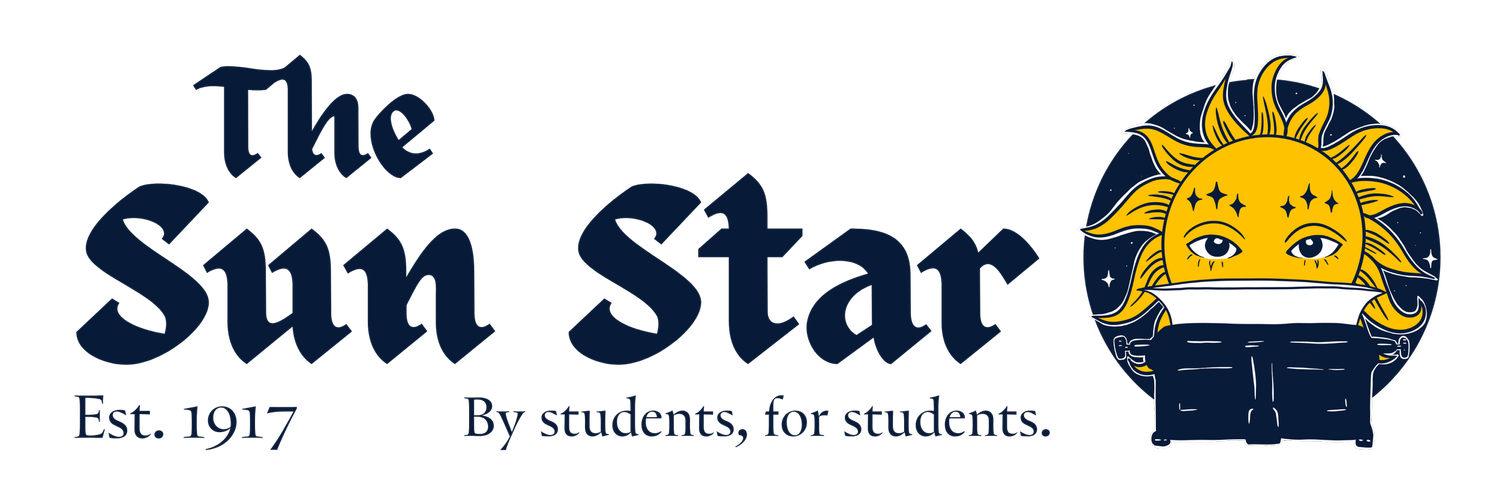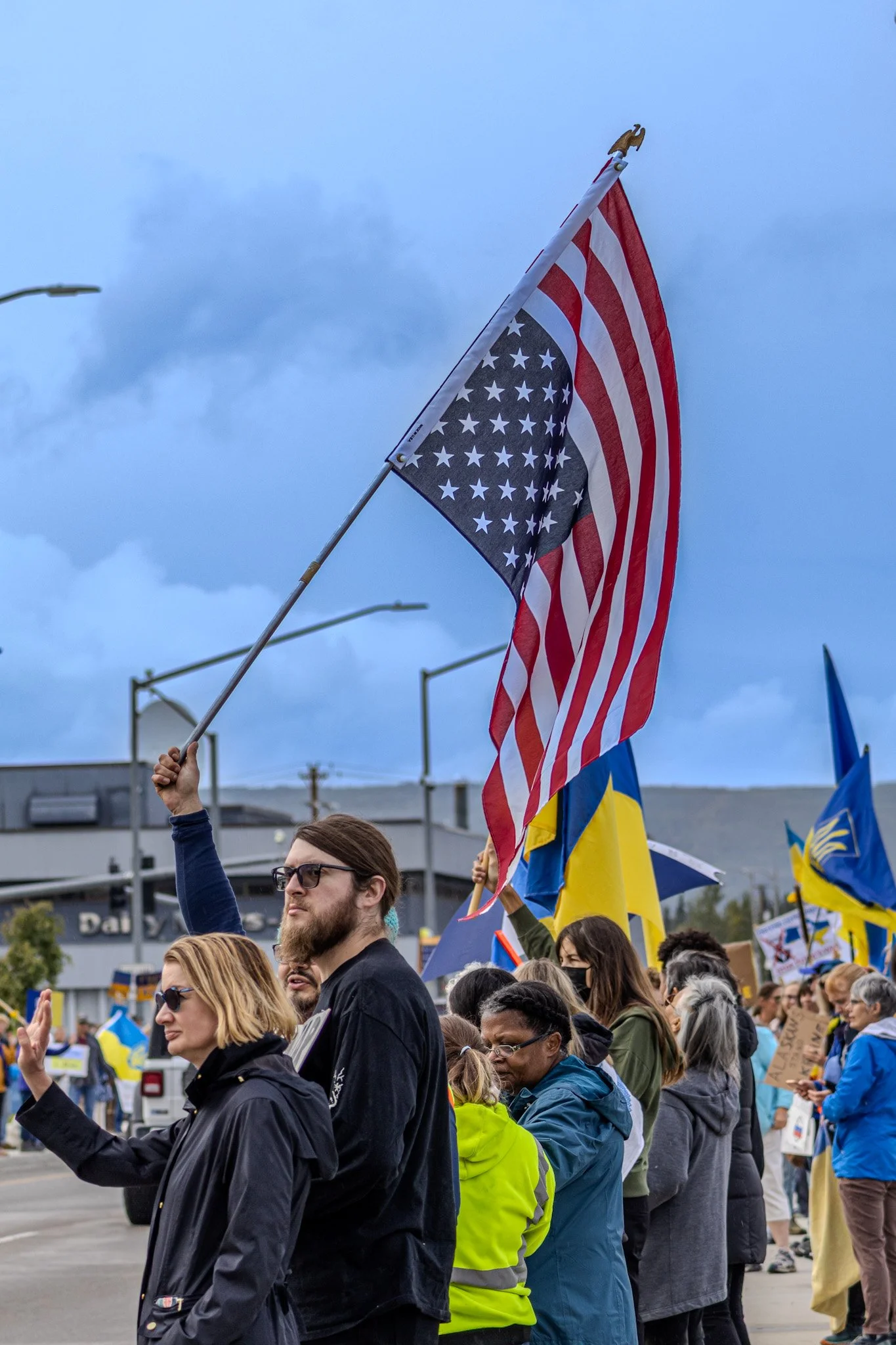Fairbanksians Protest Trump-Putin Summit
Story by Amber McCain
Photo by David McCain
Crowds line the flag bridge on Cushman Street, waving signs and banners as traffic honks in solidarity.
Hundreds of people gathered in downtown Fairbanks on Thursday, August 14, in protest of Friday's upcoming visit to Alaska by U.S. President Donald Trump and Russian President Vladimir Putin. The demonstration, marked by music, handmade signs, and passionate people, sent a clear message: these politicians are not welcome in Alaska.
“I’m here to protest against the arrival of Trump and Putin here in Alaska,” said Da-ka-xeen Mehner, Professor of Native Art at the University of Alaska Fairbanks.
Professor Maya Salganak, who teaches Theater and Film at UAF, emphasized the deeper cultural implications of the visit. “This is Indigenous land that has seen historical genocide and trauma,” she said. “Repeating these actions, welcoming war criminals to these lands, is triggering for so many people here. We just have to continue to advocate for peace and well-being.”
Attendees lined the streets with signs, while chanting, “This is what democracy looks like” and others voicing concern over global issues.
Chants echoed through the streets:
“Say it loud, say it clear, Putin is not welcome here!”
“Hey hey, ho ho, Donald Trump has got to go!”
Musicians with an accordion and acoustic guitar joined the crowd, adding energy to the peaceful atmosphere. A protest organizer, with the same megaphone used to inspire chants, thanked participants, as the protest wound down: “Thanks for showing up every time. We know you can do it!”
Igor Pasternak, Adjunct Instructor in Drawing and Inuit Art, spoke through tears as he reflected on the war in Ukraine.
“I was born and raised in the Soviet Union, and Ukraine appeared after I left,” he said. “What’s going on today — the killing, the rape, the kidnapping, the torture… it hurts. Every time I talk to my classmates still there, I feel the pain.”
Pasternak emphasized that, to him and many others, the situation in Ukraine is not ambiguous. “It’s very clear who the aggressor is, and who the victim is. The fact that we’re even questioning that in America, that hurts.”
“I’m just glad to see so many people realize that our country is under threat,” said Jane Reilly.
An hour or so in, the crowd had grown to about 400, with more people continuing to arrive. “It’s a good turnout,” said one passerby admiring the crowd.
In preparation for the Trump and Putin meeting at Joint Base Elmendorf-Richardson, hundreds in Fairbanks, plus people in Anchorage, Ketchikan,Valdez, and Juneau gathered to remind the world that Alaska is not just a backdrop for power. From Indigenous leaders to immigrants and students, the community came together in protest, not out of fear, but out of hope for something better.






